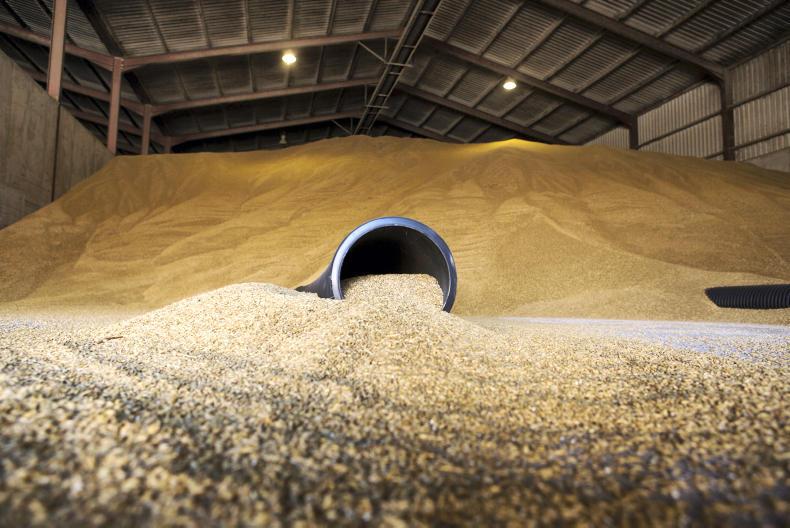Fears are growing over large volumes of grain stocks in merchants’ and farmers’ sheds as winter ends. Estimates of stocks that have the potential to overhang the market range from 50,000t to 100,000t.
Most of this is in the southeast, and every tonne seems certain to inflict losses on the owners. The grain was bought at the top of the market at around €200/t at 20% moisture, and if sold today would sustain losses of around €40/t.
Merchants and farmers would be willing to take that hit to clear their sheds, but can get no buyers.
Imported maize at keen prices coupled with the excellent back-end, has transformed the supply-demand balance
Forward prices for next harvest are well back on 2018, so losses are likely when the grain is sold.
Merchants holding grain say they will find it difficult to offer credit on inputs or rations due to stretched cashflow.
Imported maize at keen prices coupled with the excellent back-end, has transformed the supply-demand balance. Instead of the anticipated fodder shortage, there is now an unwanted surplus of domestic grain. One load of imported grain was reported to be stuck in an Irish port for almost two weeks recently as there was no available storage space for it.
IFA grain chair Mark Browne issued a strong call for support from fellow farmers.
“Last summer, when livestock were facing a fodder crisis, tillage farmers put their shoulder to the wheel, and planted 55,000 acres of catch crop that extended feed supplies into the autumn.
“Now, the shoe is on the other foot, and we need dairy, sheep, cattle, pig and poultry farmers to insist on inclusion of native Irish grain in their rations,” Browne said.
“Irish grain is a better feed source than many of the cheap ‘filler’ products being included in rations, and is fully traceable,” he said.






 This is a subscriber-only article
This is a subscriber-only article









SHARING OPTIONS: